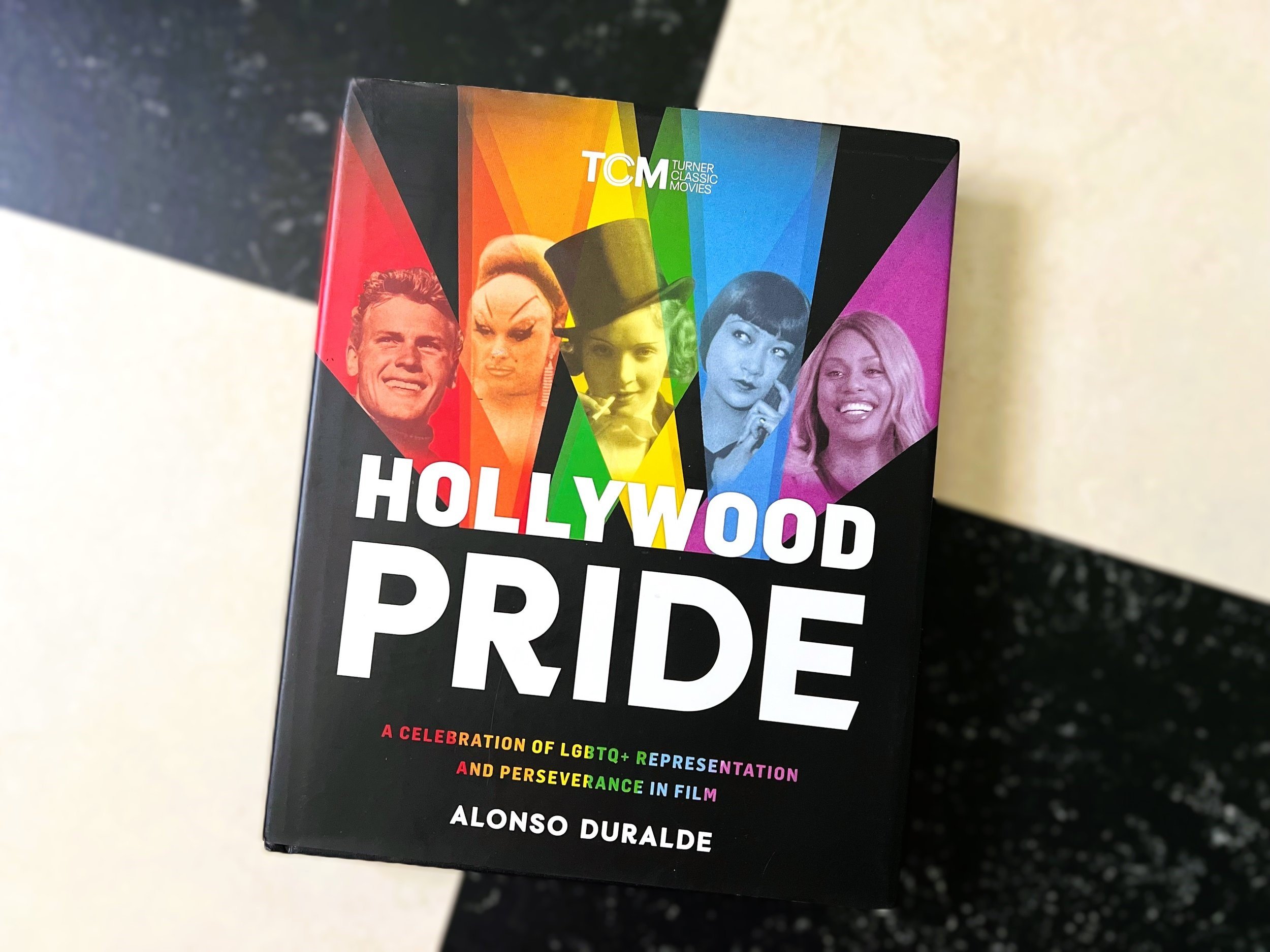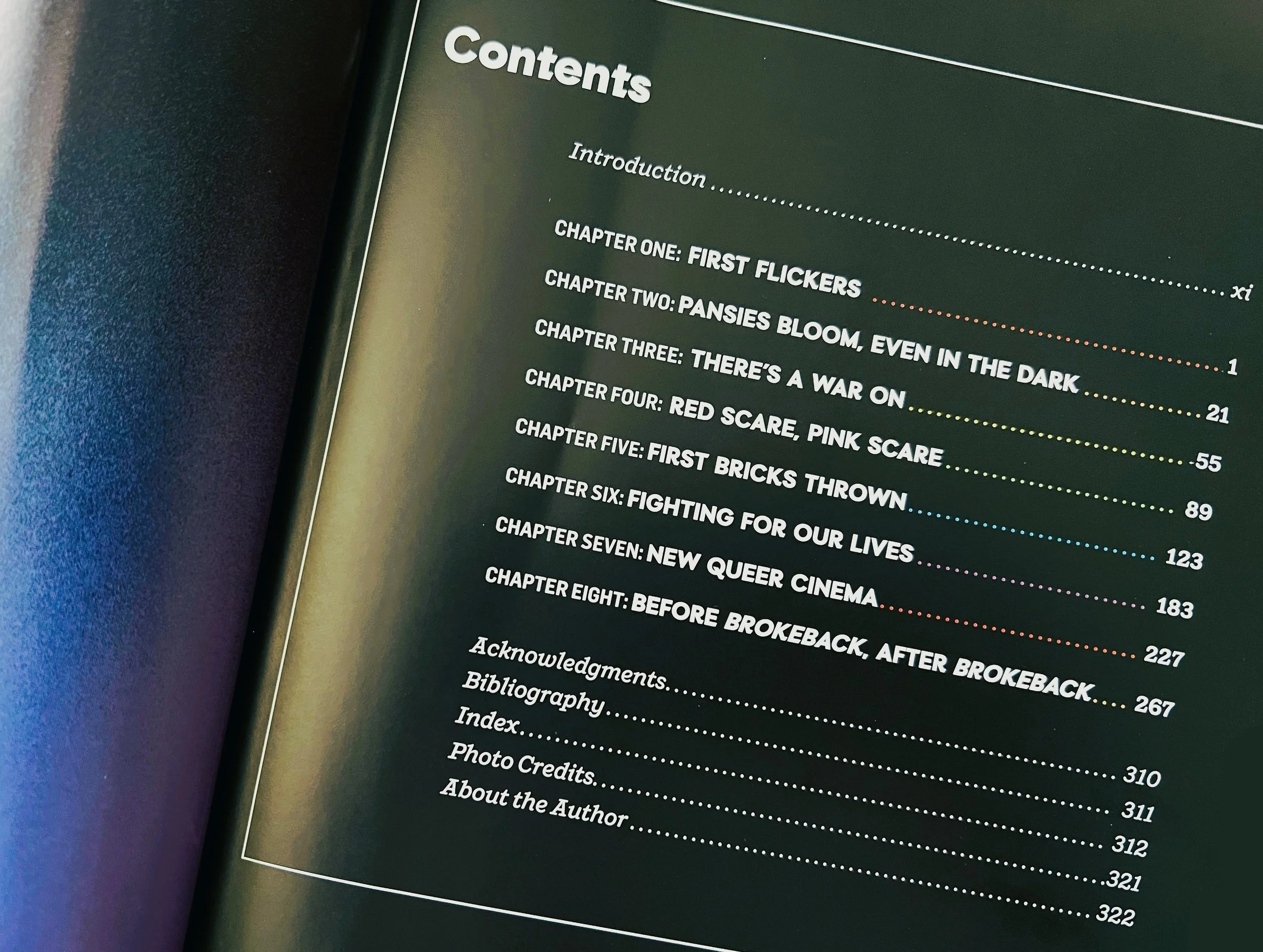HOLLYWOOD PRIDE highlights LGBTQ+ filmmakers that were not only forgotten but erased
Hollywood Pride: A Celebration of LGBTQ+ Representation and Perseverance in Film
Written by Alonso Duralde
Published by Running Press
Available for purchase here
by Rosalie Kicks, Old Sport & Editor in Chief
Representation and inclusion within all facets of the arts is incredibly important, specifically in terms of films. Movies have the ability to provide viewers with an insight into a variety of experiences. Seeing oneself illustrated on screen not only empowers, but gives validation of the right to exist. Cinema has the power to open doors for the viewer to new perspectives, bestow empathy, and provide comfort that one is not alone. Inside the pages of “Hollywood Pride” author and film critic Alonso Duralde recognizes Tinseltown players dating back to 1894 that have helped get us to the point we are today in terms of LGBTQ+ depiction on the silver screen. More importantly, he spotlights those that were not only forgotten but were actively erased.
“Hollywood Pride” is broken down into eight sections and offers a in-depth timeline through the lens of cinematic performances and stories.
In Duralde’s thoughtful introduction he addresses that this book is not meant to serve as an absolute be all end all list of queer cinema. With that said, it does cover an expansive amount of ground, starting with the silent era and up until 2023. After devouring this impressive guide, there is no doubt that even an avid cinephile will discover films to add to their watch list.
With my affinity for older films, especially those of the silent and pre-code era, I was pleased as punch to find some of my favorite filmmakers and actors of that time highlighted amongst the pages in chapter one. Of course, the most thrilling aspect of reading a book such as this is finding new pictures to watch. Within each of the eight sections, Duralde shares films within the noted time frame, icons that blazed the trail, and informative insights and observations. Each chapter is book ended with a list of artists of note which I found to be especially helpful as he chose to include writers, producers, and crafts people as well as directors of the time.
For those on the hunt for new-to-them watches, they will find “Hollywood Pride” most beneficial. However, the book’s true power lies with its capacity to provide a new perspective about a previously watched film. Take, for example, a classic such as The Wizard of Oz (1939). Duralde presents this film as not necessarily having direct references to queer subject matter. However, he explains the important role that subjectivity plays to help understand the influence films such as this have had on countless viewers within the LGBTQ+ community. He references novelist, Armistead Maupin’s distinction of having a “biological” family and our "logical” one. For Dorothy, the troupe of outcasts she meets as she saunters down the yellow brick road are ultimately more concerned and empathetic than her actual familial relations. For many LGBTQ+ folks, this is something they are able to identify with and in turn have felt represented by the experience Dorothy has.
One of my big takeaways from “Hollywood Pride” is the importance of identifying individuals within the LGBTQ+ community that have contributed or make contributions to our society. In terms of creative endeavors such as film, Hollywood, (particularly during the golden age) often has created and perpetuated fabrications about their stars, to fit a desensitized agenda. By not acknowledging someone’s true self, it eradicates them from existence and takes away the opportunity for them to be recognized for their accomplishments. One day it would be wonderful to get to a point in which someone is able to identify simply as a filmmaker or a writer rather than their sexual orientation or gender. Unfortunately, we still have a ways to go to get there. The significance of knowing who is behind and/or in front of the camera ensures that a variety of voices are heard and diverse stories are told.
In celebration of Alonso’s book and Pride month, I will be highlighting some of the new-to-me films that I recently discovered compliments of “Hollywood Pride”. Check back next Monday on thoughts about my first watch, Pandora’s Box (1929).
Purchase Hollywood Pride from your local bookstore or here.





